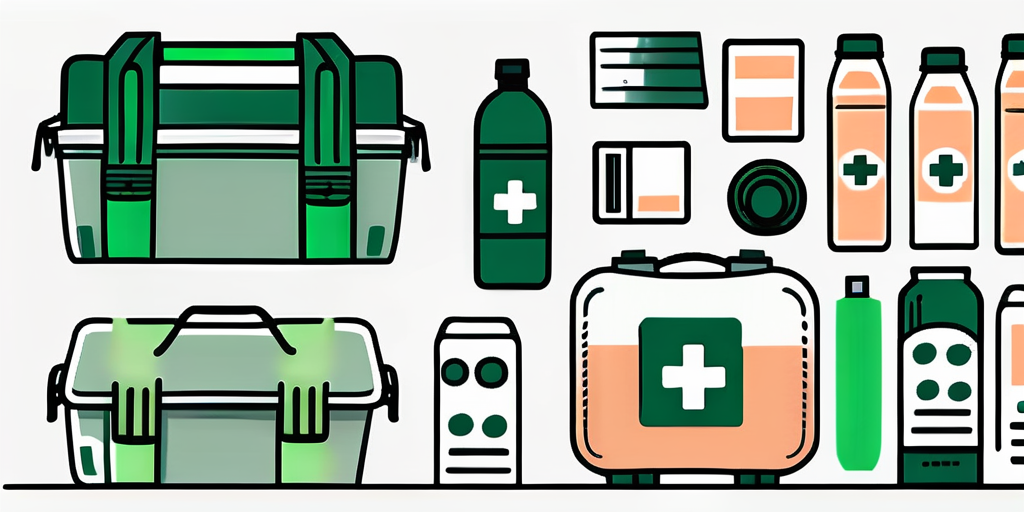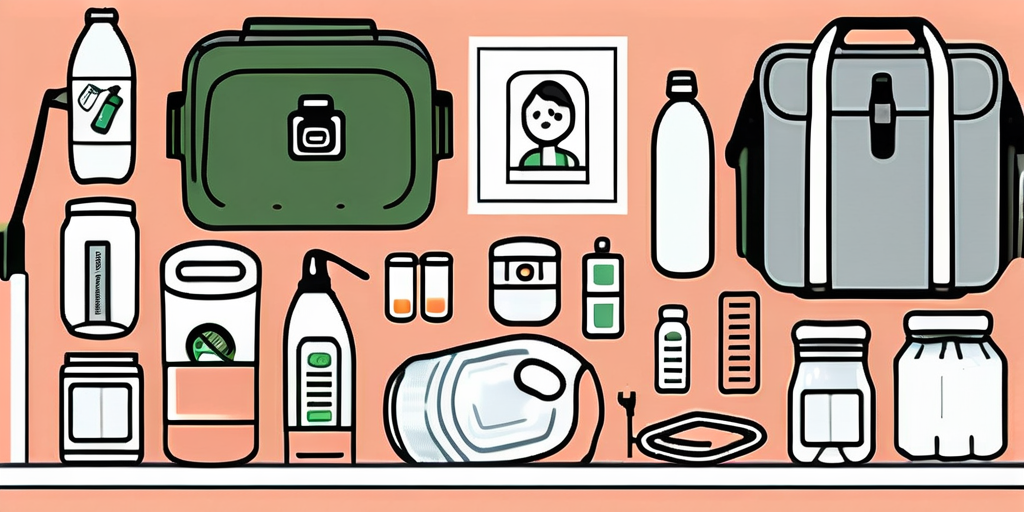Are you ready to protect yourself and your loved ones from the unexpected? In earthquake-prone areas, being prepared for tremors can mean the difference between life and death. In this comprehensive guide, we will explore the causes and effects of earthquakes, learn about the science behind these natural disasters, and discover how they impact human life. We will also provide you with safety measures to follow during earthquakes, post-earthquake safety tips, and essential preparations to make before the quake. Additionally, we will delve into the key items you need in your earthquake kit to ensure survival and discuss the importance of mental preparedness in coping with the aftermath of these traumatic events. Let’s get started on your journey to becoming earthquake ready.
Understanding Earthquakes: Causes and Effects
The Science Behind Earthquakes
Earthquakes are the results of tectonic plate movements beneath the Earth’s surface. When these plates collide, slide past each other, or pull apart, massive amounts of energy are released, causing vibrations known as earthquakes. The study of earthquakes, seismology, helps experts understand their magnitude and potential impact on human life. By understanding the science behind earthquakes, we can effectively prepare ourselves and minimize the risks associated with these natural occurrences.
Furthermore, the movement of tectonic plates is not a uniform process. The Earth’s crust is divided into several large and small plates that constantly interact with each other. Subduction zones, where one plate is forced beneath another, can generate some of the most powerful earthquakes on the planet. Transform boundaries, where plates slide past each other horizontally, can also produce significant seismic activity. Understanding the complex dynamics of plate tectonics is crucial in predicting and preparing for earthquakes.
The Impact of Earthquakes on Human Life
Earthquakes have profound effects on human life, ranging from physical to emotional. The destruction caused by seismic activity can result in injuries and fatalities, displacement, and the loss of homes and infrastructure. Additionally, earthquakes can leave long-lasting psychological scars, impacting the mental well-being of individuals and communities. By comprehending the effects of earthquakes, we can address safety measures and develop strategies to mitigate their consequences.
In addition to the immediate impact on human life, earthquakes can also have far-reaching economic consequences. The disruption of critical infrastructure such as roads, bridges, and utilities can impede rescue and recovery efforts, as well as hinder long-term reconstruction. Businesses may suffer significant financial losses due to property damage and supply chain disruptions. Understanding the economic ramifications of earthquakes is essential for effective disaster planning and response.
Earthquake Safety: Protecting Yourself and Your Family
Living in an earthquake-prone area requires a proactive approach to safety. Being prepared and knowing how to react can make a significant difference in minimizing risks during such natural disasters. In addition to following safety measures during an earthquake, it’s essential to have a well-thought-out emergency plan in place. This plan should include designated meeting points, emergency contacts, and a checklist of essential items to have on hand.

Safety Measures During an Earthquake
When an earthquake strikes, swift action is crucial. Follow these safety measures to protect yourself and your family:
- Drop to the ground and take cover beneath a sturdy piece of furniture.
- Stay away from windows, bookshelves, and other objects that may topple over.
- Hold on to the furniture and protect your head and neck until the shaking stops.
- If you are outdoors, move to an open area away from buildings, trees, and power lines.
By practicing these safety measures, you can reduce the likelihood of being injured during an earthquake.
Post-Earthquake Safety Tips
After an earthquake, the dangers may not be over. Follow these post-earthquake safety tips:
- Take care when inspecting your surroundings for damage, as aftershocks can occur.
- Check for gas leaks, downed power lines, and structural damage before re-entering buildings.
- Listen to local authorities for updates and instructions.
- Keep emergency supplies readily accessible in case of prolonged power outages or disruptions.
By practicing caution and remaining vigilant, you can ensure your safety and the safety of those around you in the aftermath of an earthquake.
Furthermore, it’s advisable to conduct regular drills with your family members or colleagues to reinforce the actions to take in the event of an earthquake. Familiarity with the safety measures can help reduce panic and ensure a more coordinated response. Remember, preparedness is key to mitigating the impact of earthquakes and safeguarding lives and property.
Earthquake Preparedness: Steps to Take Before the Quake
Home and Building Preparedness
Preparing your home or building is essential to minimize the impact of an earthquake. Some steps to take include:

- Securing heavy items such as bookcases and water heaters to prevent them from falling.
- Strapping down large appliances, such as refrigerators and ovens, to prevent them from toppling over.
- Creating an emergency evacuation plan and practicing it with all household members.
- Ensuring your building adheres to earthquake-resistant construction guidelines.
By making these preparations, you can significantly increase your chances of emerging from an earthquake unharmed.
Moreover, it’s important to consider reinforcing the structural integrity of your home or building by consulting with a professional engineer. They can assess the building’s foundation, walls, and roof to identify weak points that may be susceptible to earthquake damage. Implementing their recommendations, such as retrofitting with steel braces or anchor bolts, can greatly enhance the building’s ability to withstand seismic activity.
Community and Neighborhood Preparedness
While individual preparedness is crucial, community and neighborhood readiness can save lives. Consider these actions:
- Organize or join a neighborhood emergency response team.
- Participate in earthquake drills and community preparedness events.
- Identify local gathering areas and establish communication networks.
- Contribute to community planning efforts and support vulnerable populations.
By fostering a sense of collective preparedness, neighborhoods and communities can become resilient in the face of earthquakes.
Furthermore, collaborating with local authorities and emergency services can enhance community preparedness. Understanding evacuation routes, designated shelters, and emergency protocols can streamline response efforts in the event of a quake. By engaging with local government initiatives and staying informed about disaster management strategies, communities can proactively address potential challenges posed by earthquakes and work towards a safer, more resilient environment for all residents.
Essential Items for Your Earthquake Kit
Basic Supplies for Survival
Having the right supplies in your earthquake kit can make a significant difference in your survival. Include these essential items:
- Non-perishable food and water for a minimum of three days.
- A battery-powered or hand-crank radio for communication and updates.
- An emergency flashlight and extra batteries.
- A first aid kit to tend to injuries.
By gathering these basic supplies, you ensure you have the necessities to endure the immediate aftermath of an earthquake.
Medical Supplies for Emergencies
In addition to basic supplies, it is vital to include medical items in your earthquake kit:
- Prescription medications and a list of essential medical information.
- Bandages, antiseptics, and over-the-counter medications.
- A first aid manual to guide you in providing assistance.
- Personal hygiene items, such as hand sanitizer and tissues.
By being prepared with these medical supplies, you can address injuries and maintain hygiene when medical assistance may not be readily accessible.
Tools and Equipment for Post-Earthquake Recovery
As earthquakes can leave behind significant damage, having the appropriate tools and equipment in your earthquake kit is crucial for recovery efforts. Consider including:
- Work gloves and sturdy shoes for handling debris.
- A wrench or adjustable pliers to turn off utilities.
- A whistle to signal for help if trapped.
- Plastic bags and tarps for temporary shelter and protection.
By having the necessary tools, you can facilitate the recovery process and ensure a safer environment for yourself and others.
Mental Preparedness: Coping with the Aftermath of an Earthquake
Understanding and Managing Post-Earthquake Stress
The emotional toll of experiencing an earthquake can be overwhelming. It is crucial to understand the signs of post-earthquake stress and learn methods to manage it:
- Recognize common reactions, such as anxiety, sleep disturbances, and flashbacks.
- Seek support from loved ones, friends, or mental health professionals.
- Practice self-care activities, including exercise, relaxation techniques, and maintaining a routine.
- Connect with support groups or community resources to share experiences and coping strategies.
By acknowledging and addressing the mental and emotional well-being after an earthquake, you can navigate the recovery process more effectively.
Helping Children Cope with Earthquakes
Children can be particularly vulnerable to the emotional impact of earthquakes. It is essential to provide the necessary support and guidance. Consider the following:
- Reassure children of their safety and answer their questions honestly.
- Create a sense of security by maintaining daily routines and engaging in calming activities.
- Encourage children to express their emotions through art, play, or journaling.
- Monitor children’s behavior and seek professional help if necessary.
By understanding the unique needs of children during and after earthquakes, you can provide the care they require to cope with this traumatic experience.
Conclusion
Being earthquake ready is not just about physical preparedness but also about mental and emotional preparedness. By understanding the science behind earthquakes, learning safety measures, making necessary preparations, and being equipped with essential supplies, you can increase your chances of survival and ensure the well-being of your family and community. Additionally, by addressing the emotional impact of earthquakes and providing support to yourself and others, you can navigate the recovery process more effectively. Remember, readiness is key, and this guide has equipped you with the knowledge and tools you need to embrace the challenges presented by earthquakes. Stay safe, stay prepared, and stay earthquake ready.
As you embrace the journey to becoming earthquake ready, Form Function Future is here to support you every step of the way. With our high-quality, emergency and survival gear, including the flagship 72-hour backpacks the Atlas 72 and Helios 72, you can secure peace of mind through preparedness. Our modular and durable equipment is designed for reliability when it matters most. Don’t wait until it’s too late—Sign Up for Early Access today and empower yourself with the right tools to face natural disasters with confidence.
